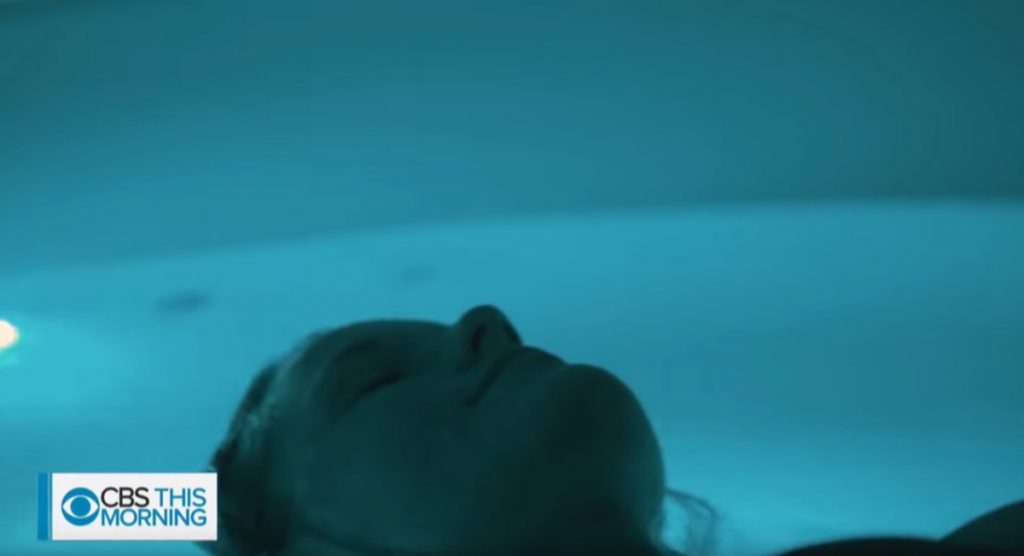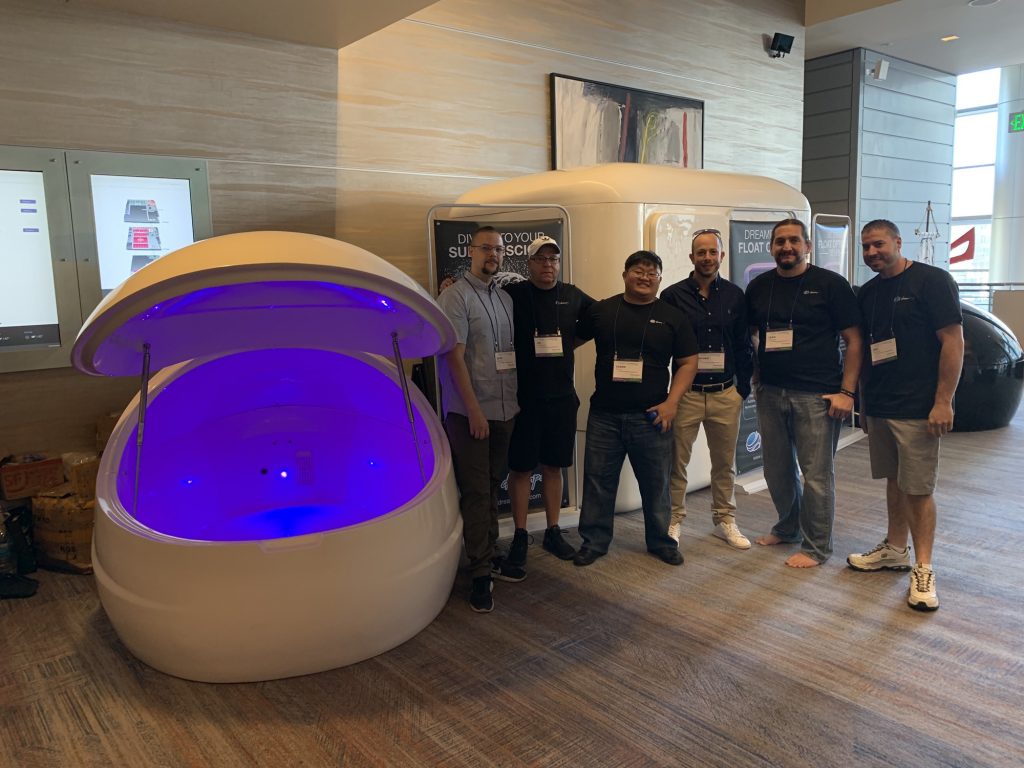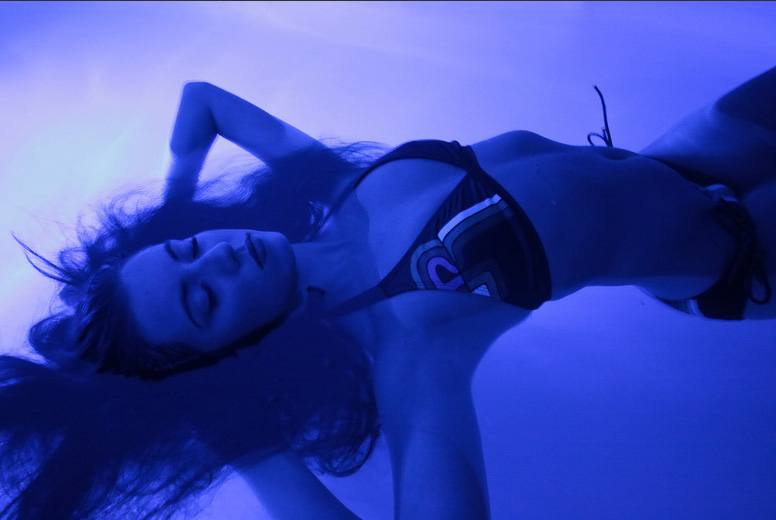Keeping your water crystal clean forms the small 1×1 of running a successful float center. Here i put together a guide on how to do it:
Minimum Standards of maintaining float solution for commercial grade standards.
Float Tank:
A tank that contains a saturated solution of magnesium sulfate 49% (Epsom Salt) at a specific gravity of 1.23 to 1.29, maintained at a temperature of between approximately 35°C to 35.5°C. The float solution will be rendered inert due to its high salinity level.
Once optimum float solution is achieved, it will be unnecessary to replace float solution as long as it is maintained at optimum salinity and chemical sanitizer level.
Maintenance of float solution is relatively straight forward, once appropriate density is achieved.
Complete change of float water depending on level of care and maintenance of float solution.
The float solution’s high salinity level prevents the growth of algae, bacteria and other micro-organisms. If salinity is maintained at optimum levels, the float solution will remain inert. Chemical is used as an additional protection of the float solution’s hygiene.
Chemicals for sanitizing
Depending on local legislation, a variety of chemicals available from local pool and spa supplies can be used. Below is a list of typical pool/spa chemicals and recommendation of dosage.
Hydrogen Peroxide (H2O2), 35% concentration, Food Grade.
Dosage (in ppm) – Min-Max: 20-100, Ideal Range: 50-60ppm
Note:
Hydrogen Peroxide is the preferred choice for float solution sanitation.
H2O2 is also an extremely powerful oxidizing agent, which makes it suitable for the destruction of a variety of pollutants and contamination.
When used, H2O2 breaks down into water, oxygen and ozone, which are least harmful to the human body.
If used in excessive amounts, a strong ozone smell may be observed. Tank must be ventilated to remove the smell, and proportions of H2O2 must be adjusted accordingly.
H2O2 at dosages over 100ppm is dangerous for the human body. Hence, care must be taken to keep H2O2 levels at idea ranges.
Do not use H2O2 and Chlorine in the same cycle. Both chemicals will cancel each other out.
As with all chemicals, handling with gloves and goggles is a must.
Chlorine (Sodium Hypochlorite, NaClO), 10% concentration
Dosage (in ppm) – Idea range: 1 – 3
Note:
Chlorine is an extremely powerful oxidizing agent, which makes it suitable for the destruction of a variety of pollutants and contamination.
Chlorine is required by some countries as standard for commercial pool/spa/Jacuzzi tank standard.
Can be use as a water clarifier. Float solution may get cloudy due to a fine suspension of human body oils after several use. Chlorine has the ability to bind with this substance, allowing the filters to more effective clear the subtance, giving the float solution a clear and sparkling appearance.
It has an extremely strong smell, which is associated with that of public swimming pools. Smell maybe extremely negative to some floaters
Concentrated use of chlorine may not be suitable for use in an enclosed environment, due to the strong odor of Chlorine byproducts.
Some hypothetical concerns of chlorine and human health, such as Asthma, skin irritation etc.
Bromine (1-bromo-3-chloro-5,5-dimethylhydantoin), usually in tablet form.
Dosage (in ppm) – ideal range: 2 – 4
Note:
Bromine is another common water sanitizer used in Spas and jaccuzzi hot tubs.
It comes in tablet form, which makes it easier to dispense. Can be placed inside the filter chamber and allowed to be dissolved slowly over time.
However, Bromine has trouble in dealing with organic contaminants, such as oils and sweat, and may cause water to develop mold or slime.
It also has a very strong smell, which may be uncomfortable in an enclosed float tank.
UV Light Disinfection:
UV light is used as a back up to chemical dosage in the Dreampod.
UV is only effective against living micro-organism. Effects are minimum in salt soluton of optimum salinity.
Allows the use of reduced chemical levels
Supplementary Chemicals
Non-chlorine oxidizing shock
Several pool chemical companies have their unique blends of non-chlorine pool shock, which is some forms of potassium hydrates which helps increase oxidation effects, helping to eliminate organic contaminants. This will help reduce smells and remove contaminants which may reduce the clarity of the water.
Another benefit is that it does not contain chlorine or calcium and the shock helps keeps pH level balanced, saving both time and money on other chemicals, allowing you to maintain the solution for a longer period of time.
The use of the shock is not compulsory in the float tank, but it does help keep the water clear and smelling fresh, improving the aesthetic appeal of the tank.
Metal Removing Chemicals
In areas where ground water be used in taps, metal contamination of the float solution may cause the float solution to take on a tinted color. (Eg green for iron contamination, brown for copper contamination). The tint of the colours may range from a slight tint, to a deep and complete colour change of the water.
Metal Removing chemicals will help breakdown the metallic contamination, allowing the water to return to its natural clear state.
Do note that depending on the severity of the colour change of the float solution, a complete change of the float solution might be a better solution to the problem.
All chemicals to be added during the float tank’s filtration cycle for maximum effectiveness.
Further items:
Filter Check:
Minimum requirement for float tank filter is a filter bag capable of filtering contaminants above 10 microns.
Filter have to be replaced every 50 floats.
Filters to be replace after every catastrophic contamination, ie solid waste matter discharge in float solution.
Signs of an overloaded filter: Increased build up in Manganese oxide in tank walls, reduced performance of pump, cloudiness of float solution due to effervescence.
pH:
pH is a measure of acidity and alkalinity, where 7.0 is neutral.
Float solution pH level should be maintained between 7.2 and 7.6.
Higher values will cause the sanitizer applied to become less effective, while lower level, ie below 7, is considered acidic and may cause damage to the pump and other critical components.
Water pH level can be controlled by adding Sodium Carbonate (baking soda) if water is acidic, or Sodium Hydrogen Sulphite, if water is alkaline.
Tank maintenance
While the float solution is regulated by the maintenance of salt levels and via chemicals, the tank itself also requires maintenance to maintain optimum levels.
Manganese or Magnesium Oxide, is the byproduct of Magnesium Sulphate salt, due to oxidation. It will usually manifest itself as a brown substance along the wall of the float tank. While it is not dangerous in anyway, it should be removed every morning with a clean rag, to maintain a clean look for the float tank.
The interior of the float tank should be wiped down and disinfected on a weekly basis. White vinegar or rubbing alcohol is recommended. This is to prevent mold or slime from growing of the wall inside.
For the exterior of the tank, excess salt and salt water must be wiped away with cloth soaked in warm water. This is to prevent unsightly salt build up, and additional salt may compromise the paint on the float tank.
Ensure minimum water level is achieved, by replenishing fresh water when necessary, to achieve optimal water flow and filtration. Water loss is usually caused by evaporation.
Serious Contamination
In the unlikely event of a serious contamination of float solution by floater, eg vomit or fecal matter, the following steps should be taken.
- Remove all large contaminant particles using a sieve or a SPAwand immediately.
- Increase dosage of chemical sanitsers; Minimums: Chlorine: 10ppm, H2O2: 50ppm
- Run the filter for a minimum of 2 hours. The UV will activate with the manual filtration cycle
- Remove and change filter after the cycles
- Visually inspect float solution for any visible contamination and smell.
- If there are no further problems, leave float doors open to allow excess sanitizers to evaporate.
- Should the water be deemed contaminated beyond cleaning, tank is to be drained of the float solution immediately, and the interior of the tank disinfected with chlorine or alcohol. After which, dissolve another 550kg of salt to create a new pool of water.
Do ensure additional chlorine/hydrogen Peroxide is added during the filtration cycle to deal with any introduced pathogen, such as Salmonella and E. Coli.





